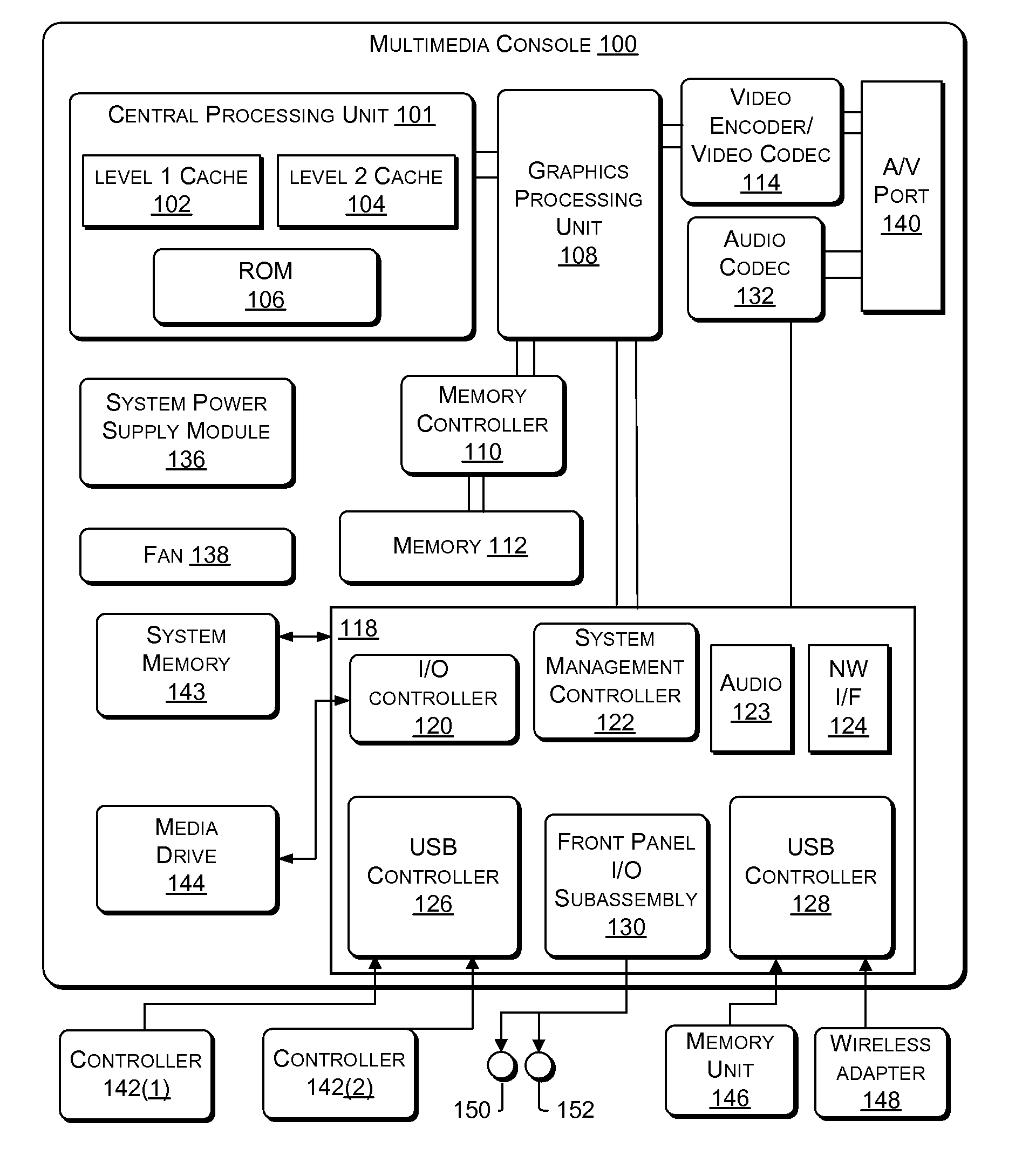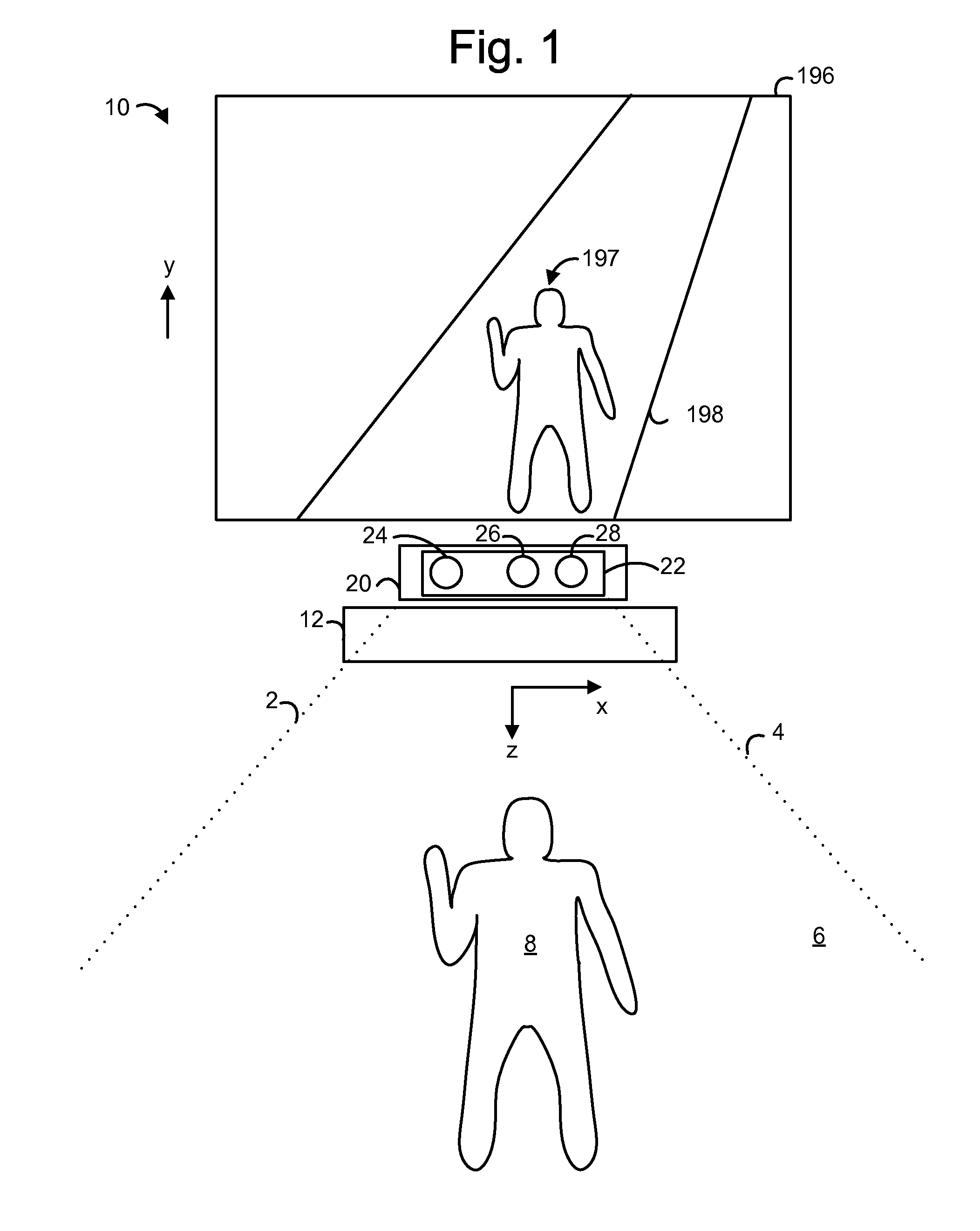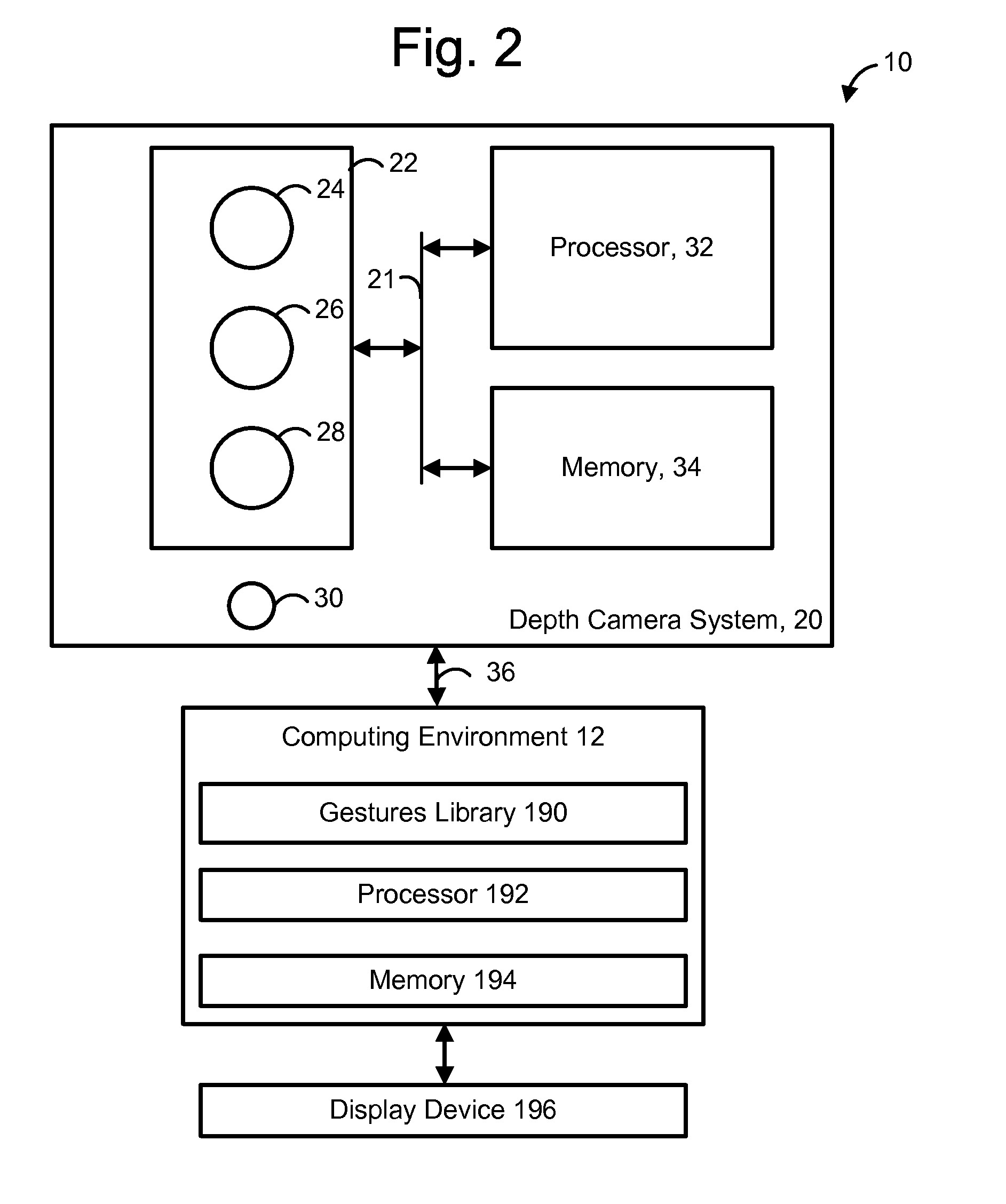Use of wavefront coding to create a depth image
- Summary
- Abstract
- Description
- Claims
- Application Information
AI Technical Summary
Benefits of technology
Problems solved by technology
Method used
Image
Examples
Embodiment Construction
d 5 m, respectively, consistent with FIG. 21.
[0030]FIG. 23 depicts a method for tracking a human target in a motion capture system using dual image sensors.
[0031]FIG. 24 depicts another example scenario in which depth information is provided as set forth in step 600 of FIG. 6, using dual image sensors.
[0032]FIG. 25 depicts the first image sensor 2402 of FIG. 24 which does not have a phase mask.
[0033]FIG. 26A depicts a reference image in the example scenario of FIG. 24.
[0034]FIGS. 26B, 26C and 26D depict a diffracted image at an object distance of 1, 2 or 4 m, respectively, in the example scenario of FIG. 24.
[0035]FIG. 27 depicts an example model of a user as set forth in step 608 of FIG. 6.
DETAILED DESCRIPTION
[0036]Currently, there are two primary methods to create a depth image. One method, which uses structured light, illuminates with a pattern and then measures the geometric distortion of the pattern and determines depth from the distortion. The second method, which uses time-of-...
PUM
 Login to View More
Login to View More Abstract
Description
Claims
Application Information
 Login to View More
Login to View More - R&D
- Intellectual Property
- Life Sciences
- Materials
- Tech Scout
- Unparalleled Data Quality
- Higher Quality Content
- 60% Fewer Hallucinations
Browse by: Latest US Patents, China's latest patents, Technical Efficacy Thesaurus, Application Domain, Technology Topic, Popular Technical Reports.
© 2025 PatSnap. All rights reserved.Legal|Privacy policy|Modern Slavery Act Transparency Statement|Sitemap|About US| Contact US: help@patsnap.com



